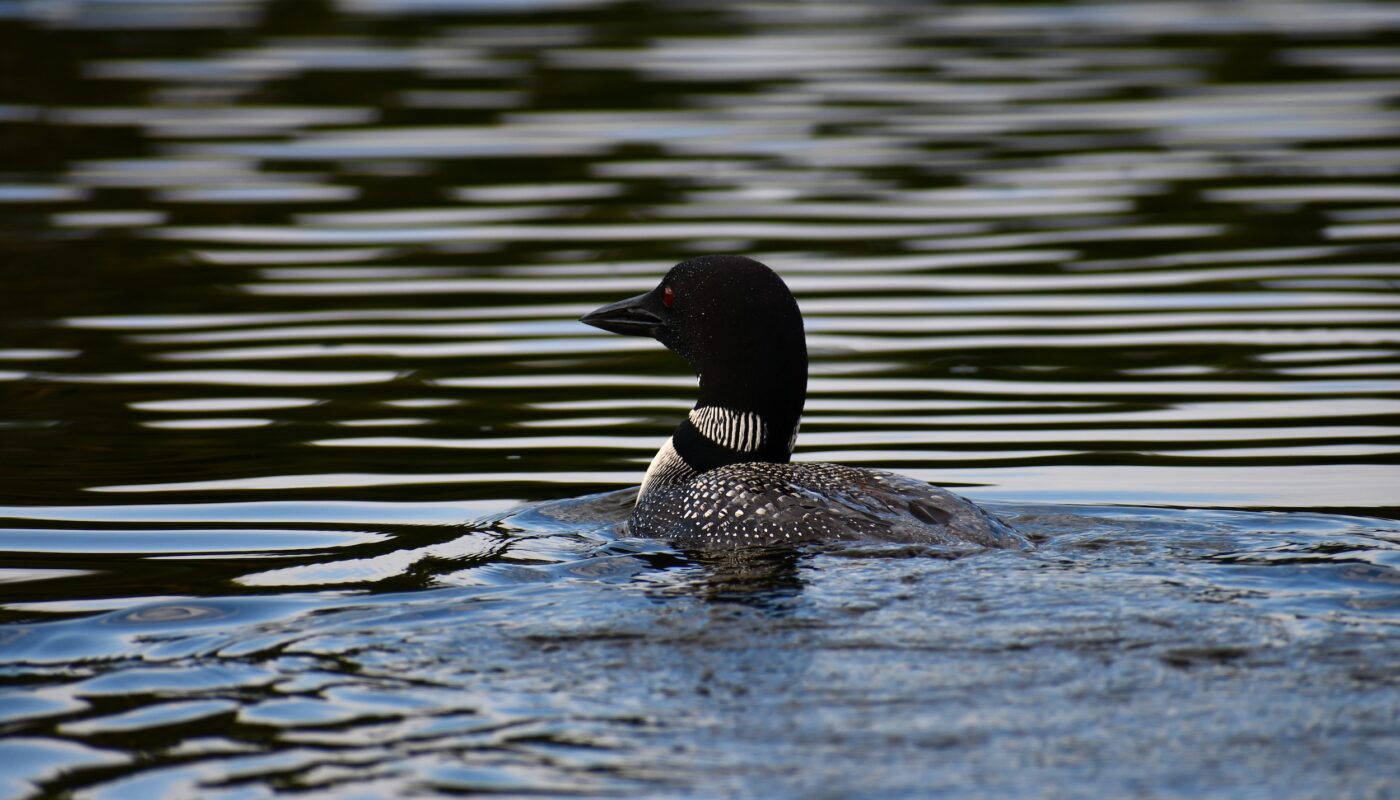My parents meticulously pack the GM station wagon with food, games, myself, two brothers, and an assortment of favorite stuffed animals: for me, my small white horse with a partially detached head. About two hours later, through the monotony of northern Wisconsin pine plantations, we arrive at a familiar patch of woods, where our small, red-painted log cabin is nestled in trees overlooking the water. Long weekends or summer breaks were spent around the lake.
In the day we descend to the sun-scorched shoreline and wade into the tepid shallows, slipping into the landscape among the reeds and water. Midday we might grab the tackle box, fishing rods, and gas station nightcrawlers to motor across the lake with Dad; the stress of careening hooks, tangled lines, and actually catching fish usually cut the outing short.
As the sun sets, the lake’s larghetto movement brings solace. The drone of motorboats give way to the croaking frogs and on some evenings the call of Gavia immer, the Common Loon, a black diving waterbird, spotted with white along its back. In Northern Minnesota and Wisconsin, the southern extent of the specie’s summertime breeding range, loon visits are still special enough to cause pause.
Before dusk we take the canoe out for a chance to catch nothing more than the loon’s call. Entering a grouping of water lilies, we raise our paddles according to Mom’s instructions to avoid damaging the aquatic plant. As we glide, lily pads coddle the canoe hull with a gentle shushing sound. Then, sometimes, maybe even after absconding back to the cabin, a loon’s wail soars across the lake, subsuming all other sounds—frogs, crickets, creaking docks. It envelopes the listener, like sitting under a waterfall or raising a conch shell to one’s ear. ‘You hear it?’ the person next to you will ask despite the obvious.
The loon’s wail, meant to help locate other loons, expands into an evanescent fugue over the lake, repeated back by the ensemble of trees and boulders along the shore. In the call’s resonance, the listener struggles to locate the sound, being fully part of it, detecting — as Leslie Marmon Silko describes– that “viewers are as much a part of the landscape as the boulders they stand on.” Briefly, alongside the loon searching for its kin, the call stirs a vague sensation of our own seeking. Perhaps we too have lost touch with another, ourselves, a place?
But the wail echo diminuendos. As with the final notes of a symphony, the overtones fade and the listener waits with suspended breath for the end of perceptible sound. The moment is then broken. No longer dwelling in the loon’s call, the listener returns to friendly conversation, the kitchen stove, the pages of a book. As kids, we find glee in the onomatopoeic repetition of the call that matches the bird’s name: “loo-oon.”
I now, years later, live Up North by California standards, yet my walks to the woods lead to alien landscapes. Along the shoulder of Mt. Tamalpais just north of San Francisco, the dizzying reach of redwoods and statuary-smooth trunks of Madrone accost me as curiosities. Yet, there are moments when the landscapes speak to me of places some 1,500 miles away.
I head to the upper “lakes” of Mt. Tam, man-made reservoirs. The chilly morning is enough to stave off human traffic and grant a quiet moment with glassy water. A mist hovers, frozen above the lake; I squat and stare to see the vapor dancing in convective swirls, rising upward. The scene is familiar, but for a dock, some birch, a tied-up canoe rocking percussively in the water, the loon’s call.
I glance around, no one in sight, enough time to vocalize my best but still squawking loon call without the judgment of others — a sorely missing element from the scene. I take a deep breath, pause to glance around once more, and belt out the two toned wail, cracking into my falsetto on the higher note. I am jolted by my own voice splitting the quiet. Unexpectedly, the sound races across the water and bounces off the opposite bank, producing two echoing calls. My heart accelerates as I am enveloped for a moment in the ripples of familiar memories. I feel the water return the soundwaves of home.
Photo by Ralph Katieb on Unsplash.
Joseph Knelman
Joseph, a writer and PhD ecologist, works on both essays and reportage regarding topics of science, nature, and place. He is an affiliate at the Institute of Arctic and Alpine Research at the University of Colorado. His work has appeared in Catamaran Literary Reader, Wilder Magazine, USDA Climate Hubs, and Marin Living Magazine among other publications.
